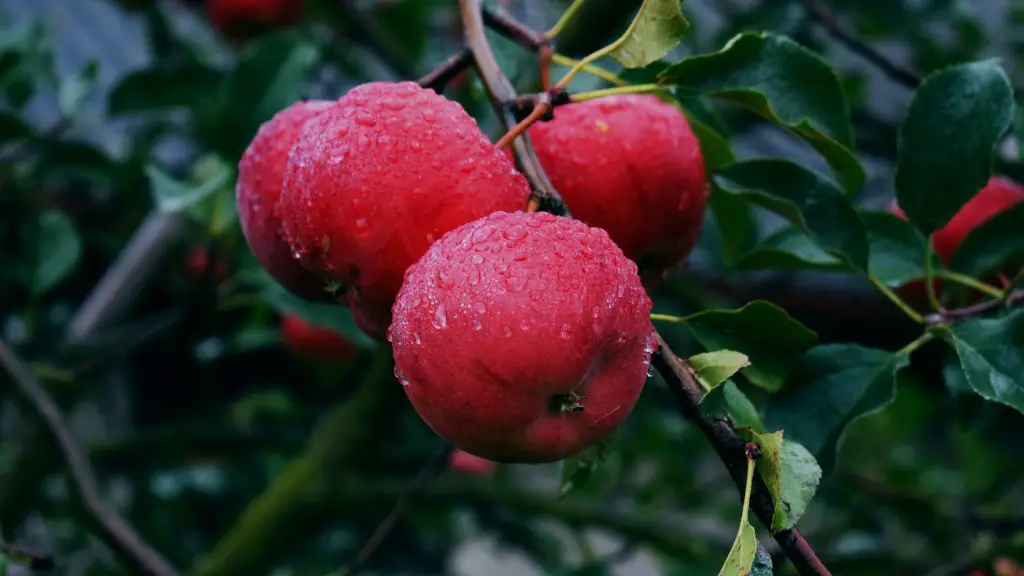Palm Tree Facts
Palm trees are seen everywhere from the tropics to arid climates. But can they survive in cold, winter climates? The answer to this question when it comes to Pennsylvania is no. Even though palm trees may be sturdy, adaptable plants, they need warm temperatures found in the southern states in order to survive. Pennsylvania may have somewhat mild winters compared to other states, but the temperatures still drop below what is needed for palm trees to thrive.
The conditions in Pennsylvania are not conducive to growing palm trees because the cold air and weather is unfavorable. Although Pennsylvania may have mild winters and temperatures rarely drop into the single digits, the cold still gets too low for palm trees to survive for any length of time. Palm trees need temperatures of at least 50-65°F for several consecutive months. Another challenge for palms in Pennsylvania is the length of the growing season which is too short for palms to develop.
The most recognizable and popular palm trees are found in the Caribbean and parts of Central and South America. These tropical palms can be identified by their large number of fronds and long, feathery foliage. Tropical palms can grow up to 60 feet tall with their trunks reaching up to 4 feet in diameter. Popular types of cold hardy palms to cultivate in colder climates include Mediterranean fan palms, Chinese windmill palms, and Mediterranean dwarf palms.
Whether they are large or small, palms add beauty and texture to any landscape and in Pennsylvania it is considered a feat of gardening to grow them at all. Palm trees require special care and protection to survive in Pennsylvania. Gardeners should consider the necessary soil and climate conditions, fertilizer needs, and pruning and trimming needs of palms when deciding if Pennsylvania is the right place to grow them.
Although Palm trees may not be ideal for Pennsylvania weather, they can be grown in containers. As long as the containers are overwintered indoors, then palms grown in containers could potentially survive in Pennsylvania. If gardeners follow the necessary steps to winterize their palm trees, then the plants should have a good chance of survival.
Gardeners in Pennsylvania are encouraged to research answers and seek out the advice of experts. The key to successfully growing palms in Pennsylvania is to choose a palm that is appropriate for the climate, provide a suitable environment, and caring for the plant properly. Rare and cold hardy palms should be chosen for the Pennsylvania climate and should be taken care of with proper fertilization and pruning. When these crucial steps are taken, Pennsylvania gardeners may be able to grow and enjoy palm trees in their yards.
Containerized Palm Trees
Containerized pal trees can also be grown in Pennsylvania. Growing palm trees in containers can offer gardeners an alternative to cold hardy varieties grown directly in the ground. The key to successfully overwintering palm trees in containers is to bring them indoors. The containers need to be placed in a warm, protected area indoors and should remain there until temperatures are consistently above 50°F. The container should be in an area that is well-ventilated and well-lit. To ensure healthy growth in the summer, the palms should be moved back outdoors for at least four months of the year.
Gardeners attempting to overwinter their palm trees should take some key steps to ensure the survival of the plants. When bringing them indoors for the winter, the plants should have their leaves trimmed, and then washed to remove any pests that may have hitchhiked in from outside. To further protect the palms, gardeners should also dust the leaves with rubbing alcohol and neem oil. The containers should also be overwintered indoors and provided with ample water, light, and nutrition.
When choosing a container for a palm tree, it is important to pick one that is both big enough, and has appropriate drainage holes. Gardeners should make sure the container has enough space for two to three years’ growth. If not, the roots will become congested and the plant will suffer. Containers should also have proper drainage so the plant does not become over-watered. The container needs to be checked periodically to make sure there is no rotting and the plants are getting enough water.
Containerized palm trees can also be grown outdoors in warmer seasons. Palm trees require lots of sun and can tolerate a wide range of temperatures outside. When out in the sun, palms require regular watering and fertilizing to thrive. A good quality fertilizer, such as palm tree food, should be used for containerized plants. Once the temperatures start to drop, the palms should be brought back indoors and placed in a warm, well-ventilated area.
Winterizing Palm Trees
To ensure a palm tree’s survival during the cold winter months in Pennsylvania, gardeners need to follow some basic steps. In order for a young palm to survive, gardeners need to make sure that it is planted in the ground or in a large container — and that the container is well-draining. The plants should also be fertilized and kept free of pests. The containers should be brought indoors for the winter and kept in a warm, well-ventilated area, and the palms should be kept away from windows or other sources of cold air.
In addition to keeping the palms indoors, gardeners should also take the time to winterize the plants. This involves trimming the leaves, cleaning the fronds, and dusting the leaves with rubbing alcohol and neem oil. This should be done to prevent fungal growth and infestations of pests. Gardeners should also be sure to check the containers frequently to make sure the roots are not rotting, and to provide the plants with enough water and nutrition.
When it is time to move the palms back outdoors in the spring, gardeners should get them acclimated first. This involves gradually introducing them to the outdoor temperatures and conditions. The plants should also be checked for pests and fertilized if necessary. It is also important to remember that moving palms back outdoors too quickly can cause shock and lead to the plant prematurely dying.
Choosing the Right Palm for the Pennsylvania Climate
As already mentioned, Pennsylvania can present gardeners with a unique challenge when it comes to growing palm trees. This is why it’s important to research and choose the type of palm best suited for the climate. The key is to choose a variety of cold hardy palms that are well-suited for the Pennsylvania climate. Popular cold hardy palms that can be grown in Pennsylvania include Mediterranean fan palms, Chinese windmill palms, and Mediterranean dwarf palms.
When selecting a palm for Pennsylvania, gardeners should assess their yard and landscape in order to choose the best type of palm tree. Factors to consider are the climate, size, and watering needs of the plants. For instance, Mediterranean fan palms need more sun and more frequent watering than other types of palms. Other types of cold hardy palms may need less moisture and can be planted in shady areas.
Once gardeners make the selection, they should also make sure that the area where the palm is to be planted is well prepared. The soil should be well drained and fertile, and soil amendments may be necessary for optimal growth. Soil amendments can help the palms to better adjust their root system and increase the available nutrients in the soil.
Providing a Suitable Environment for Palms
In order for palms to survive in Pennsylvania, gardeners should make sure to provide them with a suitable environment. If gardeners aren’t careful, their palms can become stressed and may not survive. To provide a suitable environment for palms in Pennsylvania, gardeners should make sure to water them regularly, fertilize them, and give them adequate protection from the cold.
It is also important to remember that palms are very sensitive to temperature fluctuations and can be easily damaged by cold winters. To protect the palms from damage, gardeners should consider investing in a colder container or wrapping the trunks in insulating material. Gardeners should also be sure to check the soil and water levels frequently and water the palms when needed.
Fertilizing is another important part of providing a suitable environment for palms in Pennsylvania. A good quality, organic fertilizer should be chosen with a balanced ratio of nitrogen, phosphorus, and potassium. Gardeners should also be sure to apply the fertilizer evenly and at regular intervals in order to ensure that palms get enough nutrients.
Finally, palm trees should be pruned and trimmed regularly. Palm trees can grow very large, so it is important to keep them in check. Pruning helps to maintain the shape, size, and health of the plants and can also help them to withstand cold temperatures better.
Conclusion
Although Palm trees may not be ideal for Pennsylvania weather, it is possible for gardeners to grow them in containers. Gardeners who want to successfully overwinter their palm trees should take the necessary steps to protect and winterize the plants. Gardeners should also choose a palm tree that is appropriate for the Pennsylvania climate and provide a suitable environment for the plants to ensure their survival. With proper care and attention, Pennsylvania gardeners may be able to enjoy the beauty of Palm trees in their yards.


